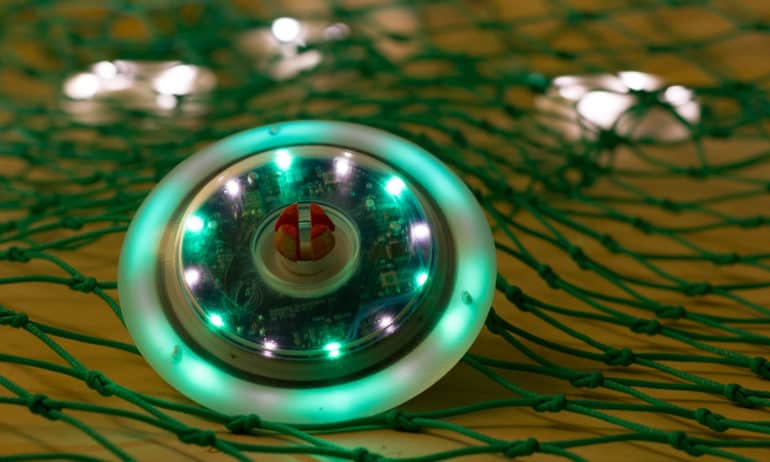British startup SafetyNet Technologies is using light to develop a potential new solution to one of the fishing industry’s biggest problems: bycatch. Bycatch—the fish, turtles, seabirds, dolphins, and other types of marine life that end up caught in fishing nets and then discarded—has both environmental and economic consequences. It damages marine ecosystems and adds cost to the fishing industry. According to Oceana, around 20 percent of the catch in United States fisheries is thought to be of unintended species. Worldwide, it could be as much as 40 percent.
SafetyNet recently developed PISCES, a light-emitting device that fits existing nets and helps fishermen target certain species. It is based on the theory that fish vary in their reactions to light, with different types of light attracting some species and repulsing others. It is designed to be flexible and comes in different shapes and sizes to accommodate a variety of equipment. PISCES is also programmable, allowing the user to choose specifications such as the type of light, its intensity, and the flash rate.
Other solutions for bycatch, such as turtle excluder devices or the Nordmore grate, tend to involve gear adapted to particular fishing environments. These devices either physically prevent certain non-target species from entering nets or allow them to easily escape. Unlike these solutions, PISCES does not focus on a specific species. Light has been shown to affect a range of fish and crustaceans, as well as turtles and birds, and the planned trials for PISCES are spread across diverse fishing environments.
SafetyNet conducted an initial trial of PISCES in 2016 in partnership with Young’s Seafood and Cefas. The tests were based in the North Sea and showed that light could reduce bycatch by up to 60 percent. Recent trials in shrimp by scientists with the Oregon Department of Fish and Wildlife have shown that light can reduce bycatch by as much as 90 percent.
Bycatch has been the target of government regulation and activist campaigns across the world. In the U.S., the National Oceanic and Atmospheric Administration recently published its National Bycatch Reduction Strategy, although some elements of existing U.S. regulation are being rolled back by the current administration. The European Union is in the process of phasing in a discard ban, which will require fishing vessels to land and count all catches against quotas.
SafetyNet’s goal is not only to help the fishing industry comply with bycatch regulation, but also to further research on the relationship between fish behavior and light. Existing studies encompass topics such as stress reactions to strobe lighting, how lighting impacts the welfare of fish in aquariums, and how light affects brown trout swimming downstream.
The PISCES technology is still new, and the product’s experimental nature has led to several challenges in its development. As founder and CEO, Dan Watson, explains, “on the physical side, we’re having to design equipment that can survive immense water pressure, impact from a rough industry, chemical and UV attack and still be easy to use and affordable.”
The project largely depends on philanthropic support and an ongoing crowdfunding initiative. As Watson describes, “we’re building devices for a fairly niche sector, which has some tradition of fitting electronics to gears but not so much with light. This means that we’re having to prove out the electronics and the science before people are willing to invest.”







